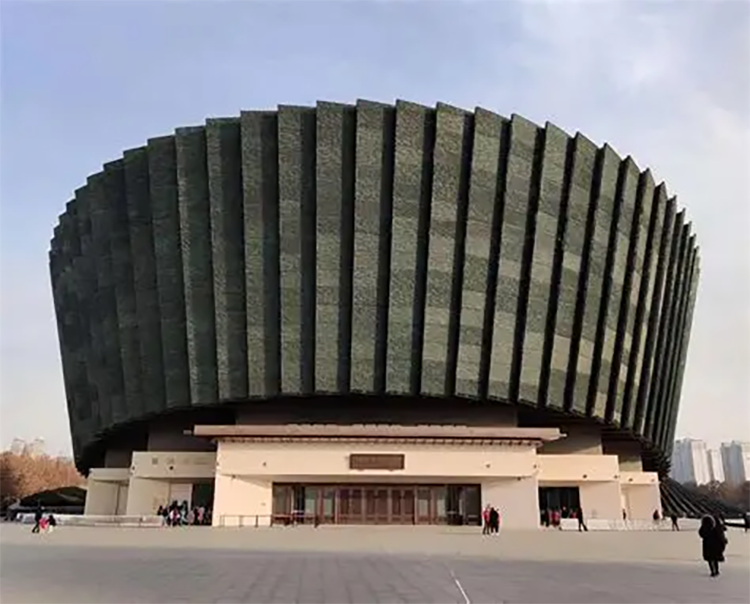Zhao Culture at Handan Museum: Discover Southern Hebei’s Ancient Treasures
Introduction: A City’s Millennial Echo
Handan, an ancient city with more than three millennia of history and once the capital of the Zhao state during the Warring States period, is the cultural heart of southern Hebei. Handan Museum is the guardian and storyteller of that long past. Step inside and you feel as if you have opened a heavy history book: the cold sheen of bronze, the simple yet lively glazes of Cizhou kiln ceramics, and vividly modeled Han dynasty terracotta figures. For travelers eager to explore southern Hebei’s archaeology and local culture, Handan Museum is an essential stop.
1. Core Features and Museum Mission
Handan Museum is a nationally designated Level-2 museum focused on showcasing the region’s historical and cultural heritage. Combining collection, research, and education, it is a comprehensive cultural institution. The permanent collection approaches 50,000 items, and the museum is especially celebrated for artifacts relating to Zhao culture of the Warring States, Cizhou kiln ceramics, and Han dynasty pottery—together forming a concise encyclopedia of southern Hebei civilization.
2. Architecture and Exhibition Layout
The building blends traditional and modern architectural elements. The museum covers about 11,000 square meters, with more than 5,000 square meters devoted to exhibition halls. The layout is logical and visitor flows are clear. Entering the main hall, you sense a solemn yet contemporary atmosphere. Gallery lighting is soft and thoughtfully designed; displays are orderly, creating an immersive and contemplative visitor experience.
3. Must-See Treasures
Among nearly 50,000 objects in the collection, several stand out as the museum’s crown jewels:
– Warring States Bronze: As one of the Seven Warring States, Zhao produced exquisite bronze weapons and ritual vessels. These pieces reveal the military power and ceremonial culture of that era.
– Han Dynasty Terracotta Figures: Lifelike pottery figures recreate social scenes and give researchers valuable insight into Han dynasty daily life and funerary practices.
– Cizhou Kiln Ceramics: Cizhou wares, known for white grounds with bold black decorations, are among northern China’s most influential folk kiln products. Their rustic yet spirited aesthetic is immediately recognizable.
– Artifacts Related to “The Orphan of Zhao”: Handan is the origin place of the famous historical legend “The Orphan of Zhao.” The museum’s related objects provide tangible context to this enduring tale.

4. Exhibition Themes and Narrative Flow
The museum’s basic displays are organized into several thematic halls:
– “Zhao Culture” Hall: A systematic presentation of the Zhao state’s politics, military affairs, economy, and culture during the Warring States period.
– “Cizhou Kiln” Special Exhibition: Traces the development, technical features, and historical importance of Cizhou kiln ceramics in Chinese pottery history.
– “Ancient Handan Civilization” Gallery: From prehistoric times through the Ming and Qing dynasties, this hall outlines the long historical thread of the Handan region.
Curators prioritize a timeline-based approach interwoven with thematic storytelling. Visitors gain a clear macro-level historical overview while still enjoying in-depth object interpretations.
5. Visitor Experience and Atmosphere
The museum attracts history enthusiasts, student groups, and local residents. The atmosphere is quiet and scholarly, ideal for focused appreciation. Lighting and exhibit spacing facilitate close viewing. A conservation and restoration center on-site allows visitors to observe parts of the artifact preservation process, enhancing engagement and education.
6. Practical Tips: How to Plan Your Visit
Suggested Routes
– Quick Highlights (1–2 hours): Head straight to the “Zhao Culture” and “Cizhou Kiln” halls to see Warring States bronzes and Cizhou ceramics.
– In-Depth Visit (3+ hours): Tour all permanent displays and check for temporary exhibitions to fully trace Handan’s history.
Opening Hours and Tickets
– Opening hours: Tuesday–Sunday 9:00–17:00 (last entry 16:30). Closed on Mondays except national public holidays.
– Admission: Free entry, but visitors must present valid identification to receive a ticket. Foreign visitors may use passports to obtain admission tickets.
– Reservations: During peak seasons and public holidays, book in advance through official channels to avoid waiting in line.
Guided Services
– Audio Guide: Chinese and English audio guides are available; rental is approximately 20 RMB per device.
– Guided Tours: Professional docents can be booked in advance, recommended for groups.
Getting There
– Public Transport: Several city buses stop at “Museum Station,” a short walk from the entrance.
– Taxi/Driving: The museum is easy to locate by taxi. On-site parking is available.
Facilities and Accessibility
– Wi‑Fi: Free museum Wi‑Fi is provided with generally stable signal.
– Rest Areas: Seating and drinking water stations are available for short breaks.
– Accessibility: Ramps and elevators are provided; the museum is wheelchair accessible.

7. Insider Tips and Local Recommendations
– Conservation Viewing: If the restoration workshop is open, watching experts at work is a rare opportunity.
– Special Exhibitions and Education Programs: Check the museum website or official social media for rotating exhibits and family-friendly activities.
– Best Photo Spots: The exterior blends traditional motifs with modern glass facades; the main entrance and courtyard make for striking photos.
8. Nearby Attractions for a Full-Day Itinerary
Handan Museum sits in the city center, so you can combine it with other cultural sites for a complete day:
– Congtai Park: Featuring the historic parade platform attributed to King Wuling of Zhao—climb for city views.
– Huiche Alley Historic District: A charming pedestrian area ideal for sampling local snacks and buying handicrafts.
– Guangfu Ancient City (about a one-hour drive): A well-preserved Ming‑Qing town with city walls and historic residences.
Conclusion: A Living Classroom of Handan’s History
Handan Museum is more than a repository of artifacts; it is a three-dimensional history textbook. From the clangor of Warring States bronze to the earthy life of Cizhou kiln pottery, the museum carefully preserves and presents southern Hebei’s cultural legacy. When you visit Handan, slow down and let this museum bring millennia of history vividly to life.


